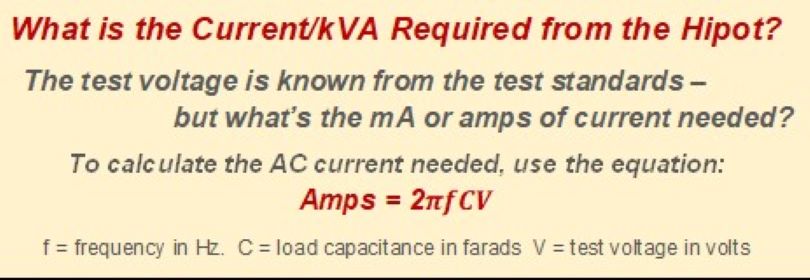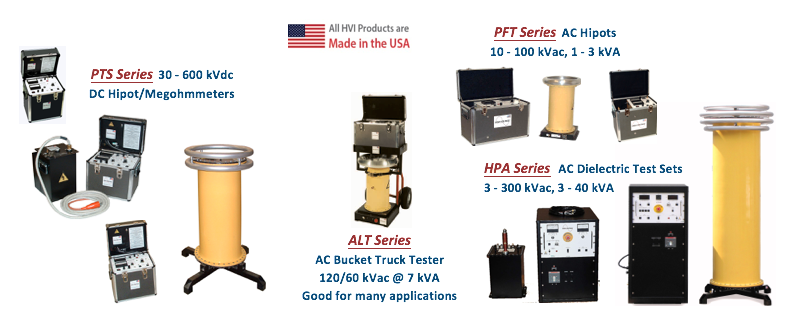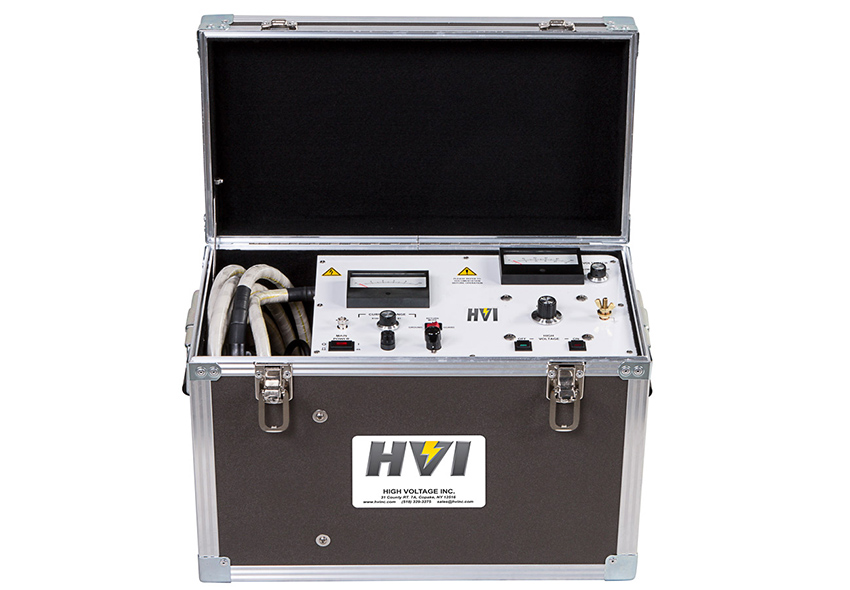Application Description
Linemen tools, like rubber gloves and blankets, hot sticks, phasing sticks, line covers, and other items used to work on high voltage live lines or to provide insulation protection from touching live voltage must be hipoted regularly to insure their dielectric withstand integrity. This is normally an AC Withstand test, where the item is subject to a specified high voltage for a certain length of time. The item either holds the test voltage or it fails. If it fails the test, by arcing through the material, the defect location must be found and fixed. This method uses AC hipots to perform this over voltage pass/fail withstand test.
Some use DC voltage hipots instead of AC. Although AC hipoting provides a more certain determination of an items dielectric integrity, there are standards for the use of DC voltage. When using DC, an overvoltage is applied to the item and the µAs or mAs of leakage current through the material and/or tracking across its surface is measured and compared against a predetermined level of acceptance or failure. DC voltage hipots can also be used to perform an Insulation Resistance (IR) test, where the megohms of material resistance at the required test voltage is measured and compared against some minimum resistance number permitted.
Selecting a Hipot Section
When selecting the hipot needed, the first specification to know is the test voltage required from the hipot. The next criterion is the output current rating required. If a DC hipot is being selected, a model providing 5 mAs or 10 mAs is fine for this type of testing. If an AC hipot is to be selected, the user must know the current needed for the test. The current rating of an AC hipot is determined by the capacitance of the load. Depending on the test object and how many are to be tested at once, the capacitance of the load may be quite high. If testing one hot stick, a 10 or 20 mA rated AC hipot would be sufficient. If testing 10 sticks at once or a rubber blanket, then a hipot ten times the current rating will be needed.
To find out the AC current draw, or how many mAs are needed by the test object at the desired test voltage, either refer to past similar tests, or test at lower voltages and linearly scale up the mA’s, or calculate the capacitance, or if the capacitance is known, calculate the amps directly by the following formula:
Amps = 2πfCV f = frequency in Hz C = load capacitance in farads V = test voltage in volts

HVI Product Solutions
HVI can provide both AC and DC voltage instruments. Our DC hipots are rated from 37.5 kVdc – 600 kVdc. Their current ratings vary from 3 mAdc – 10 mAdc. They are designed for both portable field use and stationary factory or lab applications, depending on the model. The portable models also contain high voltage Megohmmeters for IR testing. Our AC hipots range from 3 kVac – 300 kVac with power ratings from 1 kVA – 40 kVA. Some are designed to be corona free for Partial Discharge and Tan Delta/Power Factor testing. Several control packages are available from simple manual control to PLC automated. Below are several model examples. Link to the product brochures for more details.


